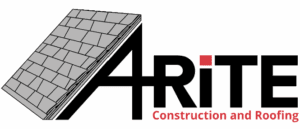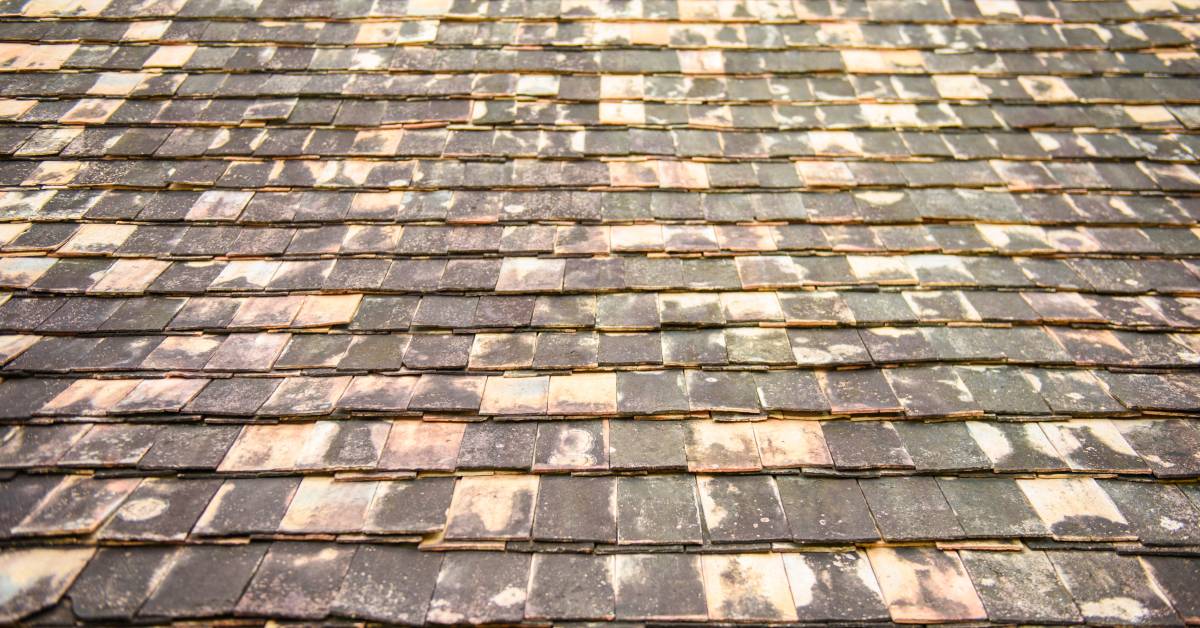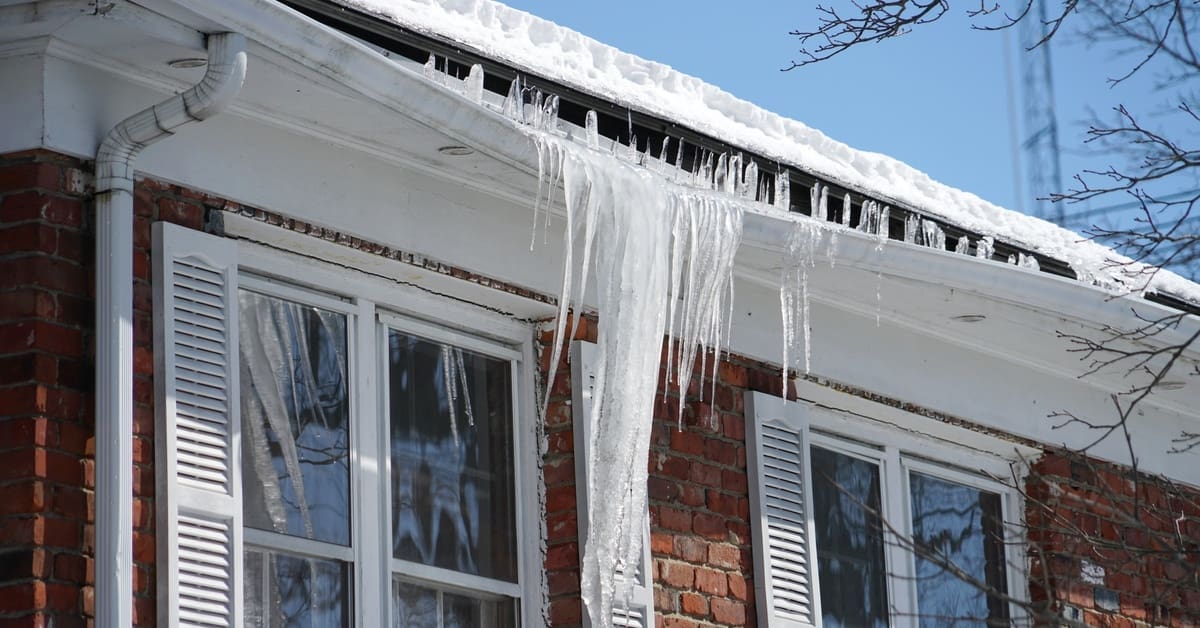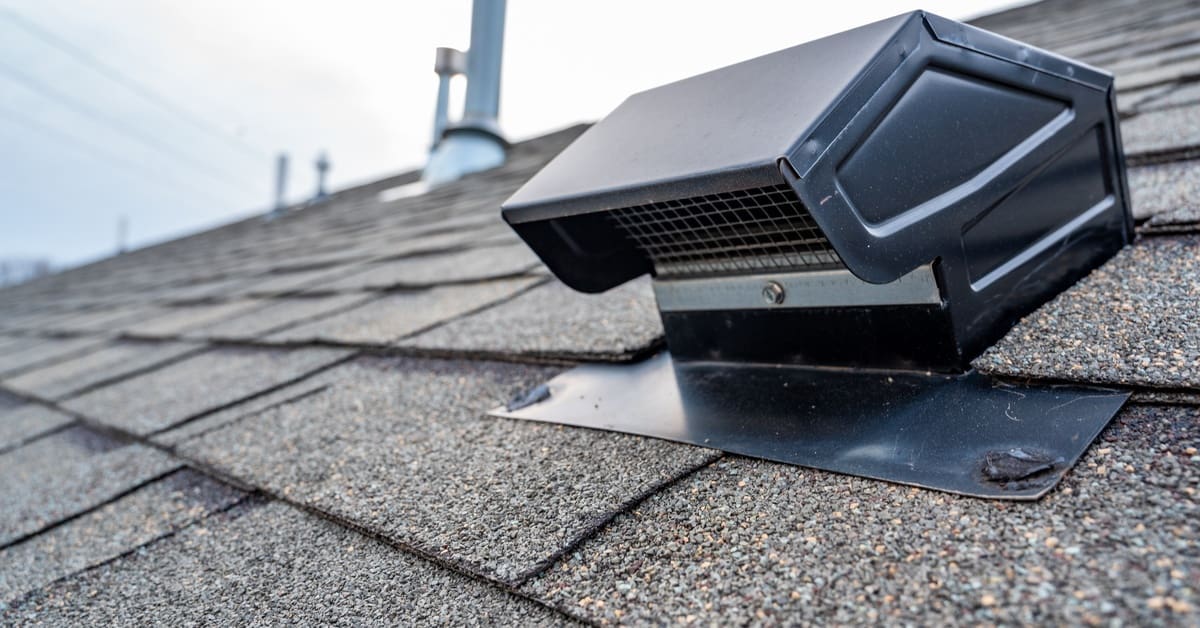Mildew on your roof is more than just an eyesore; it can negatively impact the lifespan of your roofing materials and diminish your home’s curb appeal. Understanding how to manage this issue effectively is crucial for homeowners in Wisconsin, where the humidity frequently support mildew growth. Learn how to remove mildew from a residential roof and ensure your home remains beautiful and structurally sound.
Mildew on Residential Roofs
Mildew is a fungus that thrives in damp, shaded environments, and considering Wisconson’s humid climate and frequent precipitation, residential roofs in the the Badger State are prone to mildew growth. This persistent invader mars the aesthetic beauty of your home and accelerates the deterioration of roofing materials.
Left unchecked, mildew leads to extensive repairs or even the need for a full roof replacement. Address mildew to preserve your roof’s integrity and sustain the property’s value.

Identifying Mildew Signs and Symptoms
Recognizing mildew is the first step toward effective treatment. Mildew typically appears as black, green, or brown streaks or patches on your roof, often in areas with limited sun exposure. These marks are easy to mistake for dirt or algae, but unlike dirt, mildew tends to spread over time and will maintain a slimy texture.
Different roofing materials, such as shingles, tiles, or metal, may exhibit varying signs of mildew. Consider these differences to diagnose the problem accurately and ensure you use the correct measure.
Assessing the Extent of Mildew Damage
Before tackling mildew removal, assess how widespread and severe the damage is. This evaluation helps you determine whether a simple cleaning or more extensive repairs are necessary.
Look for areas where the mildew discolored or eroded the roofing material, as these spots may require additional attention. Consider factors such as the age of the roof, the material type, and the recent weather conditions, which can all influence the extent of mildew damage and the best approach for remediation.
Gathering Essential Tools and Materials
Equipping yourself with the right tools and materials is essential for efficient mildew removal. Basic items include a sturdy ladder, safety harness, soft-bristle scrub brush, and a garden hose with a spray nozzle. Cleaning solutions range from store-bought chemical mildew removers to homemade vinegar or baking soda-based formulas.
Safety is also a top priority when working on a roof. Wear protective gear such as gloves, goggles, and masks to shield you from harmful chemicals and mildew spores during cleaning.
Take precautions by checking the weather forecast, ensuring your ladder is stable, and using a safety harness to prevent falls. Wear non-slip shoes and protective gear such as gloves and goggles to reduce risks. With the right gear and safety measures, working on your roof will be easier and more efficient without worrying about injuring yourself.
Preparing the Roof for Cleaning
Preparing your roof adequately before cleaning ensures a smooth, effective process. Clear debris, including leaves and branches, to gain access mildew-affected areas. Protect nearby plants and surfaces by covering them with plastic sheeting, as cleaning solutions can harm vegetation and paint.
Close windows and doors to prevent fumes from entering your home. This preparation safeguards your property and allows the cleaning agents to work more efficiently.
Choosing the Right Cleaning Solution
Selecting an appropriate cleaning solution is crucial for successful mildew removal. Chemical mildew removers are highly effective but may pose environmental risks. Natural solutions such as vinegar or hydrogen peroxide are eco-friendly and safe for roofs but may require multiple applications.
Evaluate the severity of the mildew, the type of roofing material, and your preferences when choosing a cleaner. Always follow manufacturer instructions for safe and effective use.
Application Techniques for Cleaning Solutions
Applying cleaning solutions correctly maximizes their efficacy while minimizing potential damage to your roof. Apply the solution to a small test area to ensure it doesn’t discolor or damage the material.
Use a soft-bristle brush to gently scrub the affected areas, working in small sections to prevent the solution from drying too quickly. Ensure even coverage and allow the solution to sit for the recommended amount of time so that it can thoroughly break down mildew.
Rinsing Techniques That Protect Roof Integrity
Proper rinsing is essential to remove cleaning residues and broken-down mildew without harming your roof. A garden hose with a spray nozzle is sufficient for rinsing off the cleaning solution, but you should use a gentle setting to avoid damaging shingles or tiles. Work downward from the top of the roof, allowing gravity to carry away dirt and mildew particles.
Post-Cleaning Inspection and Spot Treatments
After cleaning, inspect your roof for any remaining mildew or damage. Pay close attention to previously infected spots and hidden areas, including under eaves or near chimneys.
If stubborn patches persist, apply a concentrated spot treatment using a soft brush and targeted cleaner. This final step ensures you eliminate all traces of mildew, preventing future regrowth and maintaining the appearance and health of your roof.
Preventive Measures Keeping Mildew at Bay
Preventing mildew from returning involves proactive measures and regular maintenance. Keep your roof clear of debris and trim overhanging branches to increase sunlight exposure, as mildew thrives in shaded areas.
Install zinc or copper strips, which release natural antimicrobial agents when it rains and ensure the edge remains clear of mildew. Additionally, gutters must be clean and function properly to prevent water accumulation, which contributes to mildew growth.
Maintenance Tips for Long-Term Roof Health
Consistent maintenance practices are key to preserving your roof’s longevity and preventing mildew. Schedule regular inspections, especially after storms, to catch issues before they evolve into serious problems. Clean gutters bi-annually to ensure proper drainage and reduce moisture build-up.
Consider professional roof cleaning every few years to address hard-to-reach areas and maintain a pristine appearance. Adopt these habits to extend the life of your roof and safeguard your home against mildew.
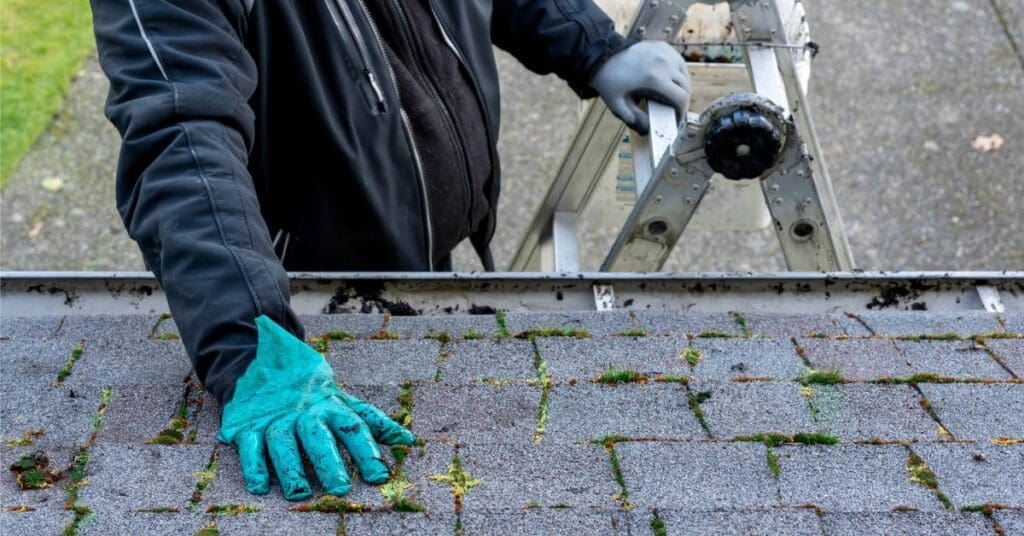
When To Call In Professional Help
Sometimes, professional intervention is necessary to address severe mildew or difficult roof conditions. If your roof has extensive damage to steep slopes or you don’t feel confident about tackling the job yourself, call A-Rite Construction & Roofing to hire experienced professionals.
We have the expertise and equipment to safely and effectively handle complex mildew removal, ensuring your roof remains protected. Our professionals ensure every job has a thorough application and your mildew growth remains a thing of the past.
We provide services for all types of roofs. Our Owens Corning roofing contractors have expertise in repairing and cleaning these types of roofs and more. Invest in our professional help to save you time, effort, and potential costly mistakes.
Removing mildew from a residential roof is essential for homeowners, especially in Wisconsin’s conducive climate. Keep your roof looking great and functioning by understanding how to identify, remove, and prevent mildew,
A proactive approach, including regular inspections and maintenance, will ensure long-term protection against mildew. If you’re ready to give your roof the care it deserves, consider contacting our professionals for expert advice and assistance. Stay diligent, and enjoy the peace of mind that comes with a mildew-free roof.

